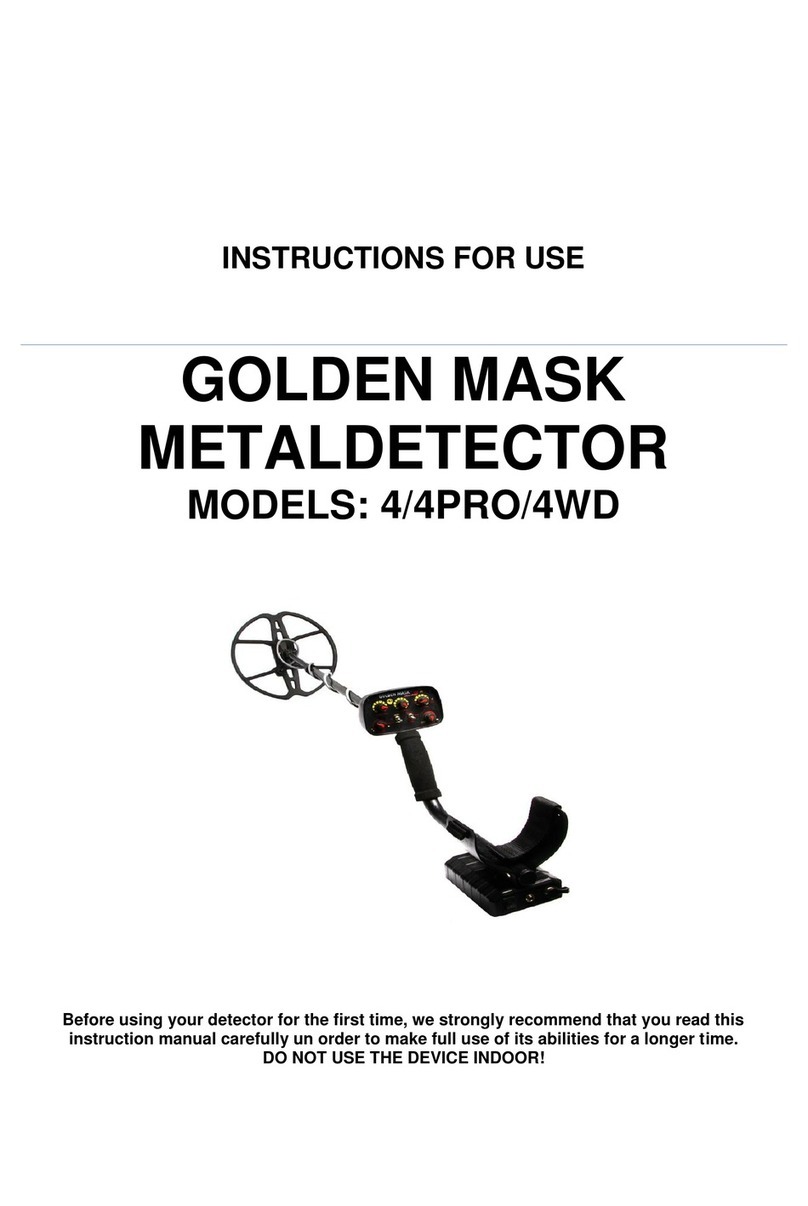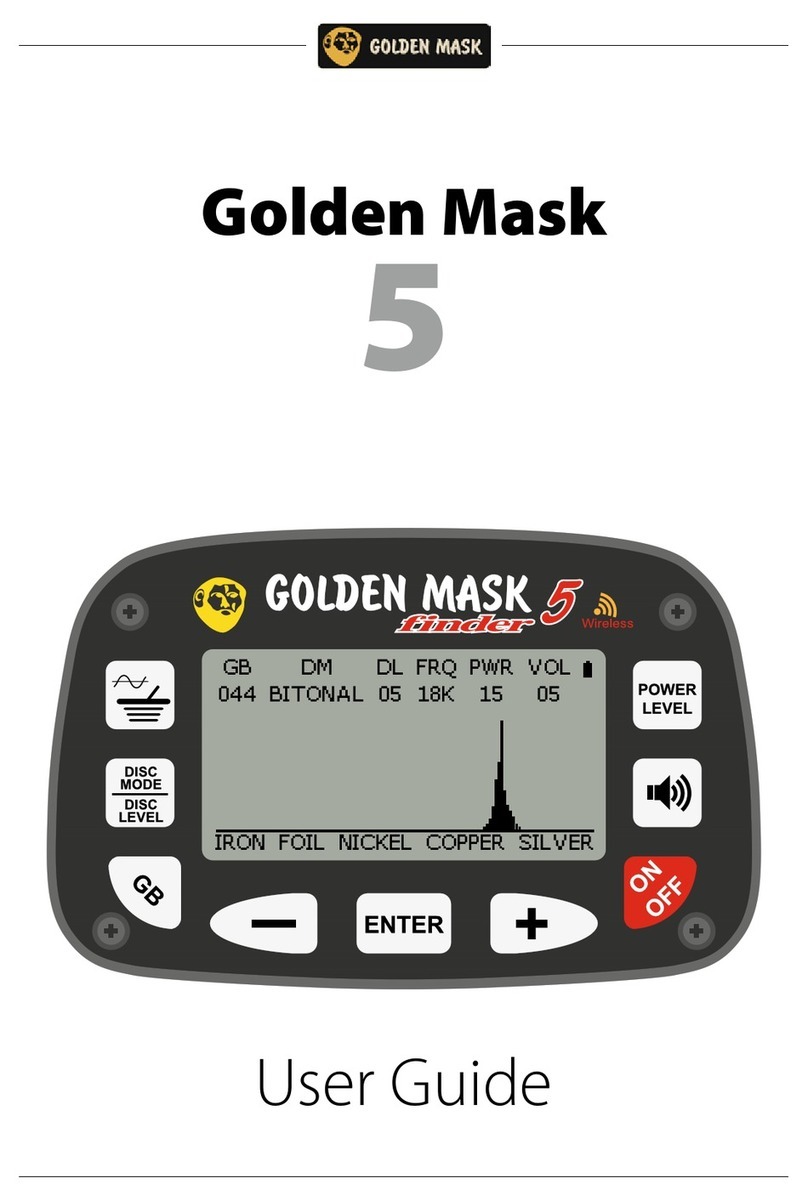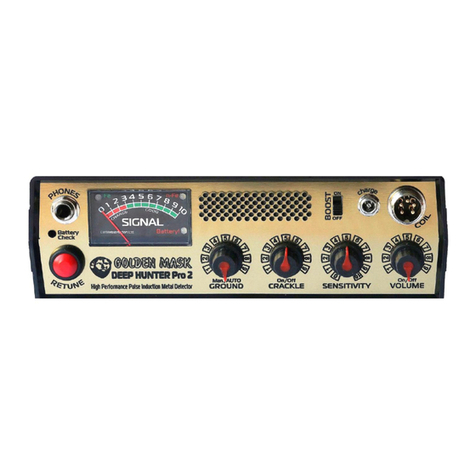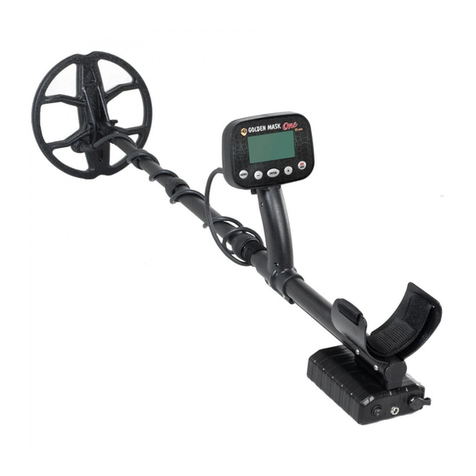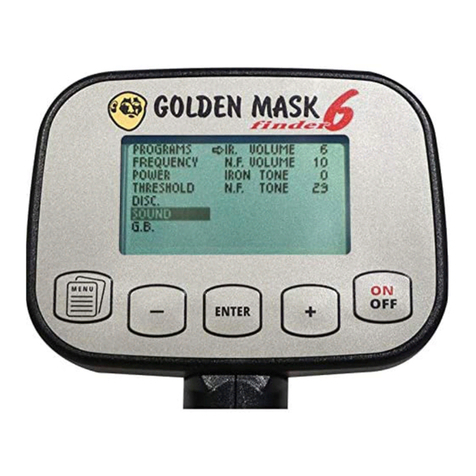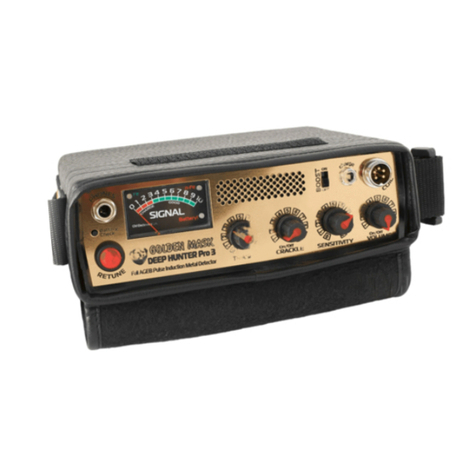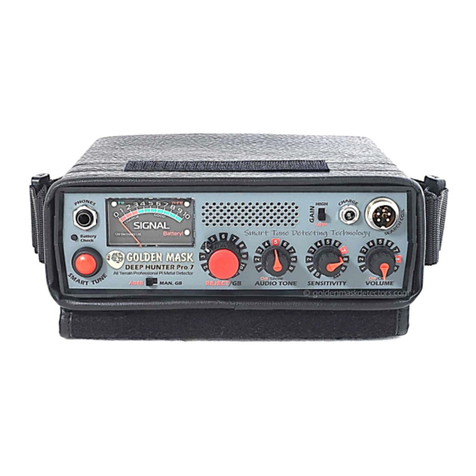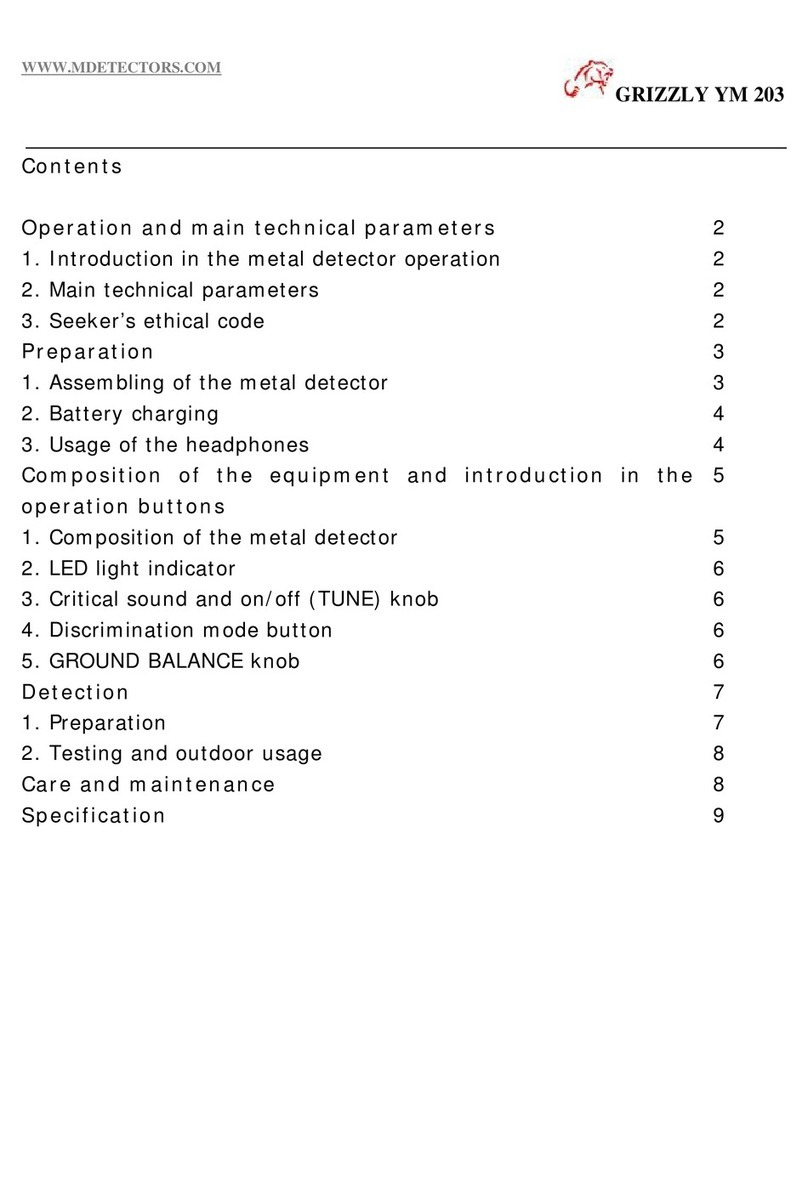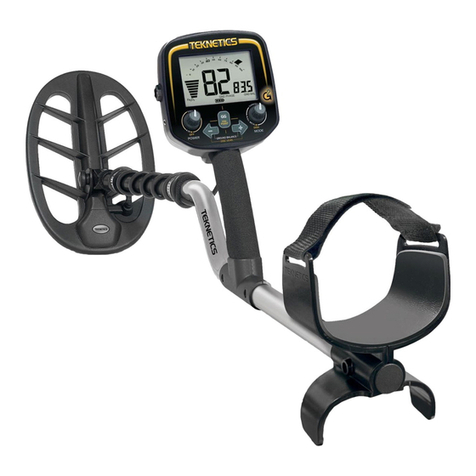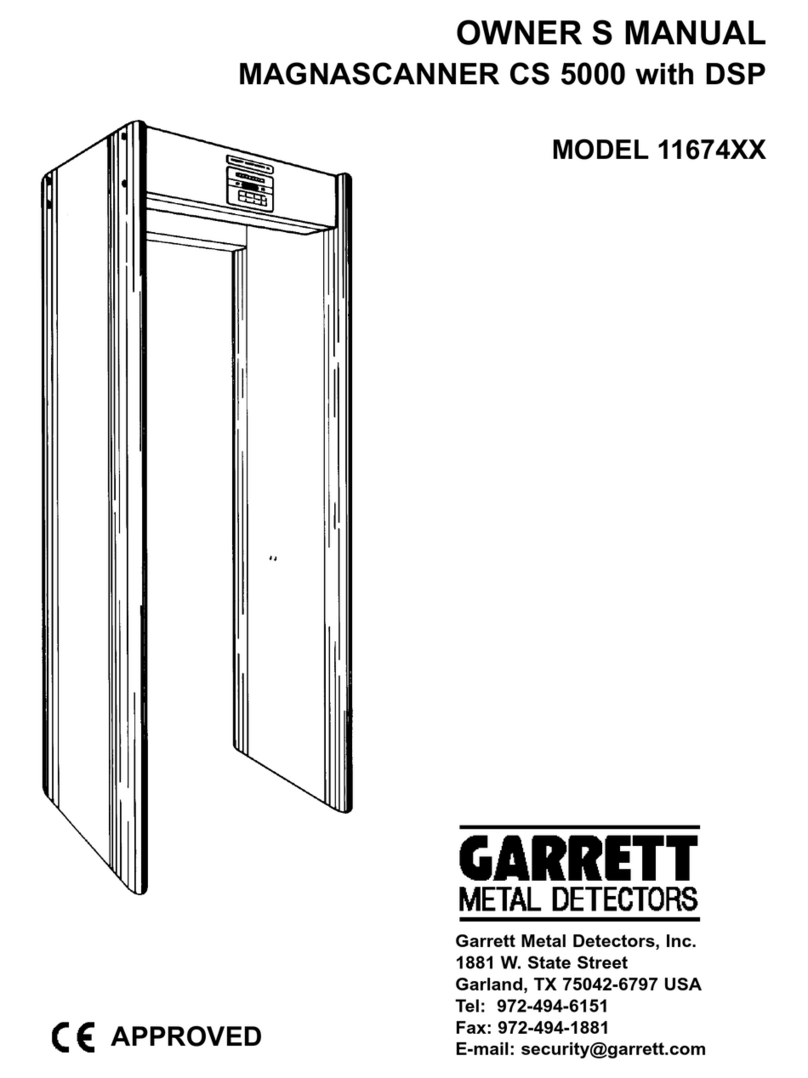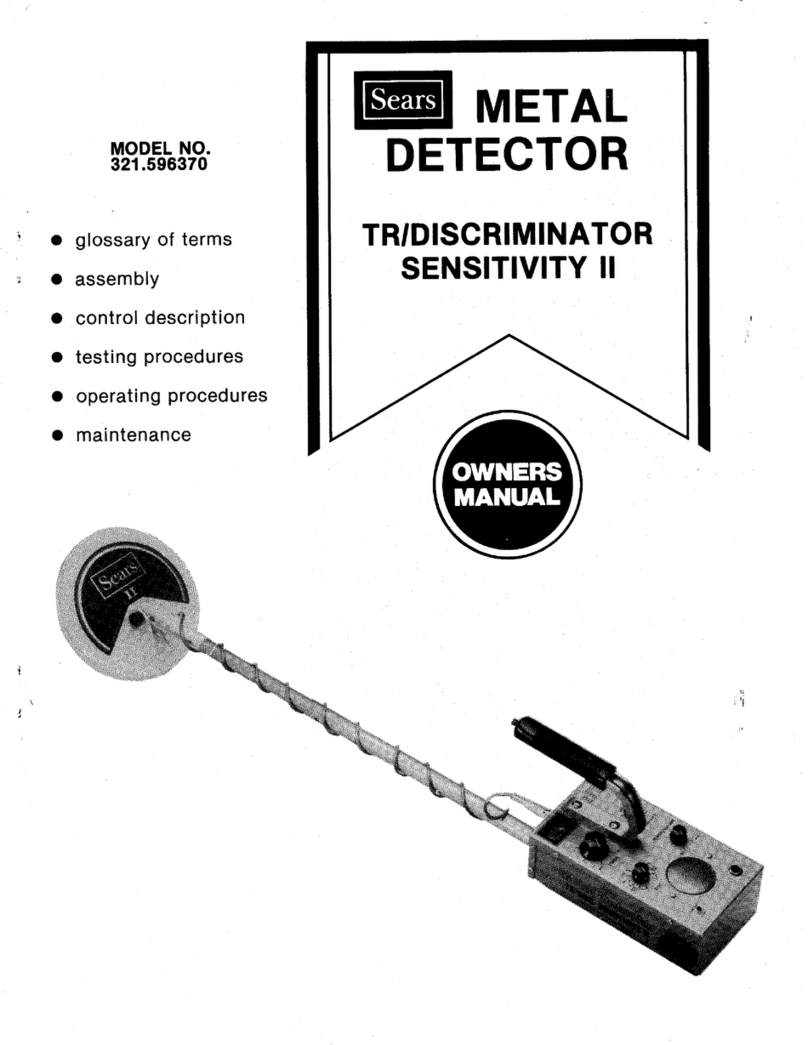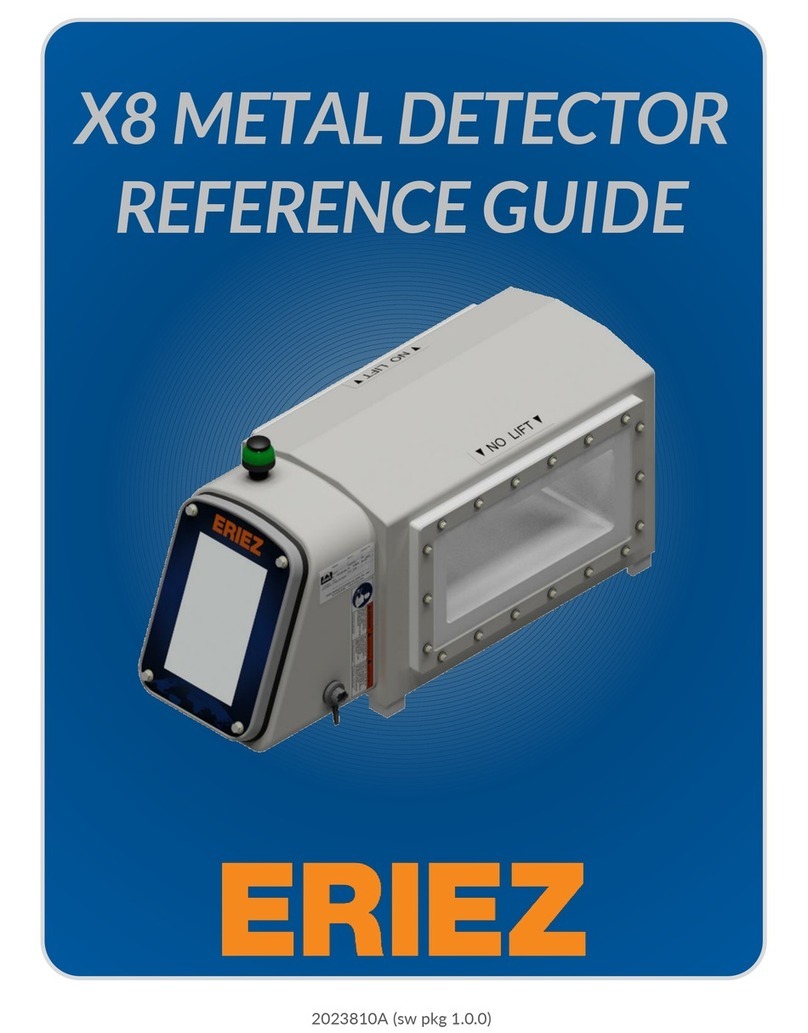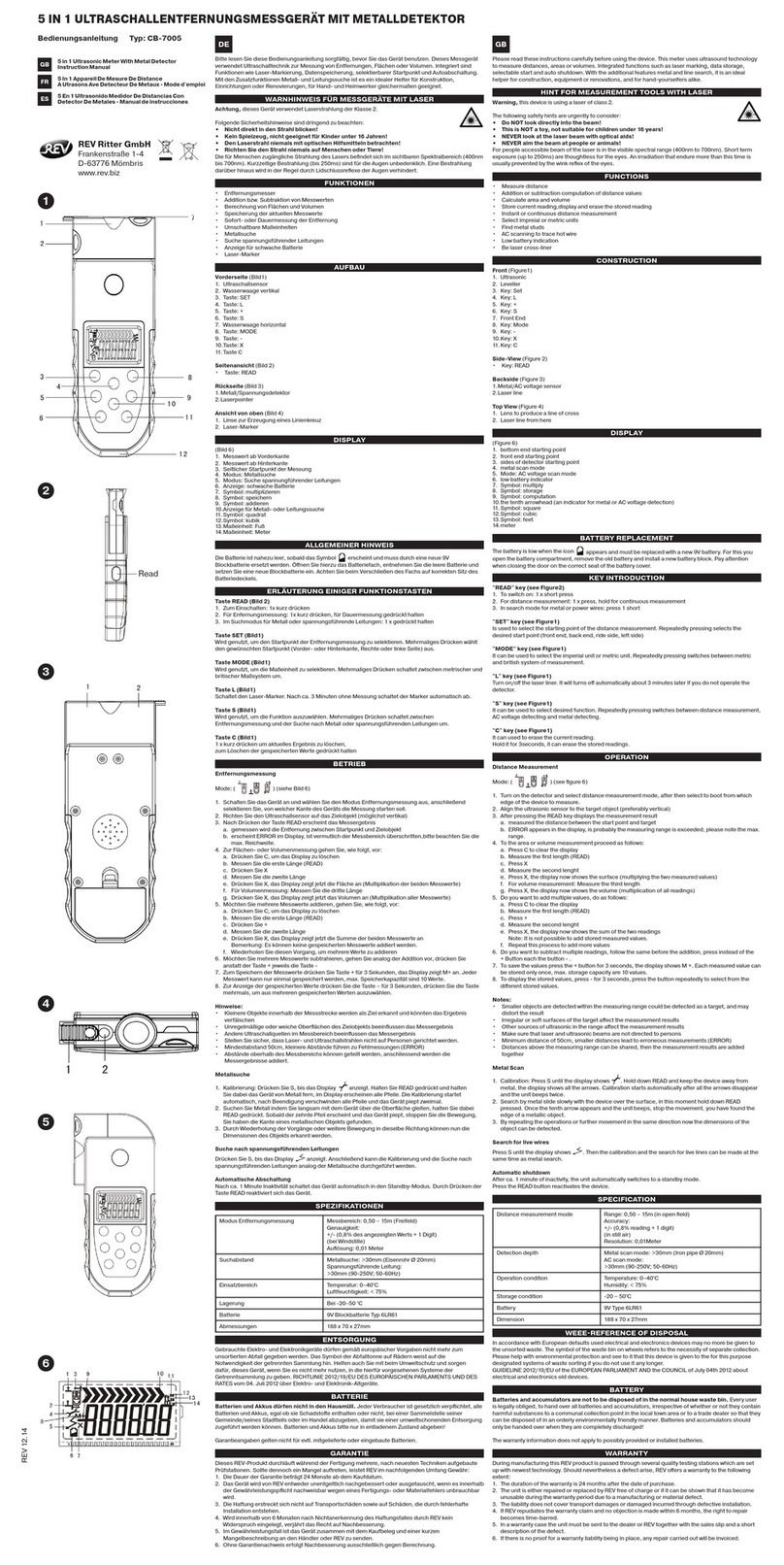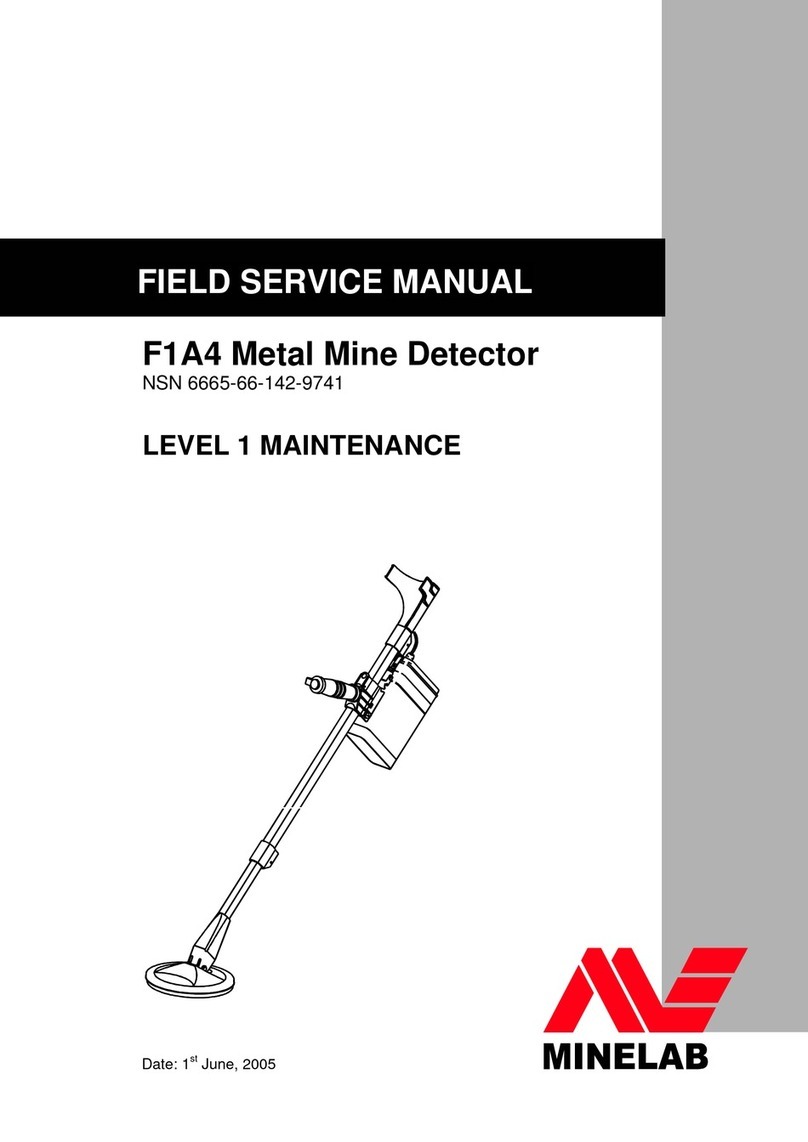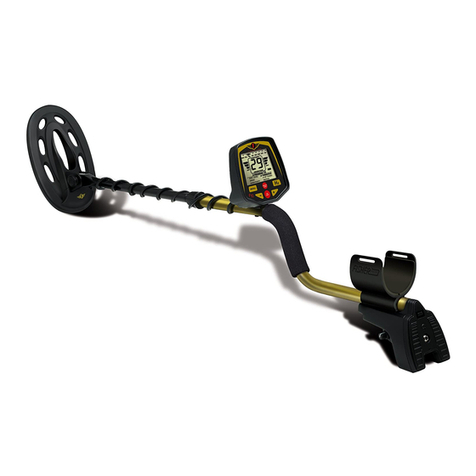
Golden Mask 7 User Guide
GMD - www.goldenmaskdetectors.com - Golden Mask Ocial Distributor
14 Golden Mask 7 User Guide
GMD - www.goldenmaskdetectors.com - Golden Mask Ocial Distributor
15
The Threshold, along with the Power Box, is a setting that has a huge impakt on the depth
of detection. So setting the threshold to the maximum possible values will give you better
depth, but with the depth comes the instability, this is why we say “the maximum pos-
sible”, not just “the maximum” value.
The Golden Mask 7 has two separate Threshold settings - SIGNAL and AUDIO.
The SIGNAL threshold controls the response (signal) that comes from the coil. At default it
is at 80. Generally you don’t want to loose the weakest signals, so you will probably use a
highter value, the maximum is 90. But if you have problems with slight EMI, you could cut
a little bit of the weakest signals by lowering this setting to 70-75 and have a better stabil-
ity. Of course, you will loose some very weak signals form targets and will sacriface some
depth. Another use of this setting is when you want to search only on the surface - lower
the value to 10-15 and you will not hear the deepest targets.
The AUDIO threshold limits the audio signal. This setting help to achieve a real, analogue-
sound threshold, when you hear a little bit of noise form the detector and this way achieve
a maximum overall sensitivity. The default value is 30 (for stability of operation), but you
can go a little bit higher (35 is a good value) or even up to the maximum value of 40, if you
want to better hear the weakest signals.
DISC. (Discrimination)
The discrimination is in fact the way your metal detector react to dierent metals and al-
loys and how it transfers this information to you. There are 3 dierent modes in this menu,
plus an additional setting called Disc. Depth or discrimination depth.
1 TONE
In 1 TONE (mono-tone) discrimination mode, the detector produces sound for nonferrous
targets only. The signal from ferrous targets (iron) is masked. However, some rusty iron or
big iron objects will produce sound, but with practice you’ll learn to securely distinguish
the sound response from iron - it is harsh and choppy, not as sharp and obvious as the
nonferrous targets sound. The Spectrum VDI scale and the Target ID help to easily identify
targets.
With the Iron Audio setting you can control the border of the signal masking. For example,
if you don’t want to hear the response from foil, just push the + button to place the border
to the right.
The 1 tone mode is good for iron-polluted areas with lots of trash. Pay attention for every
sharp signal and try not to pay attention to the chattering from the iron targets.
In 1 tone mode, the detector is a little bit deeper than in 2 tone mode and handles better
the deep iron signals.
2 TONE
In 2 TONE or bitonal mode, you hear both signals from ferrous and nonferrous targets. Fer-
rous targets are indicated with a low sound, while the response from nonferrous targets is
indicated with high frequency sound. Again, you can control what to be indicated as fer-
rous and what to be indicated as a nonferrous signal with the Iron Audio setting explained
earlier.
The bitonal mode is used if you want to hear the nonferrous and the ferrous metals simul-
taneously. This is usual for new areas, where the presence of iron could give you valuable
information about the place. Many people like to always hear the ferrous targets and this
is not a problem with the Golden Mask 7 even in very polluted areas, because of the fast
recovery speed of the detector. To search in areas with lots of iron trash the Disc. Depth
(explained later) setting should be set at or near the maximum value of 15 and the Power-
Box to Low - with these settings the detector is even faster.
ALL METAL
In ALL METAL mode the discrimination is completely omitted and the detector is equally
sensible to all type of metals. You hear the response from all the metals with a single tone.
Identication of the target detected is possible by looking the Target ID numbers and
Spectrum VDI graphic on the LCD screen.
In All metal mode your Golden Mask achieves the best depth of detection. The dierence
with the Mono mode is not as big as you’d like, however there is a dierence and this
tiny dierence may be exactly the additional depth you just need to reach a deep target
that other detectors missed. Unfortunately, this mode is not comfortable in iron-polluted
areas, but works great on places with few targets and you want to search at the maximum
depth possible.
DISC. DEPTH
The Discrimination Depth setting is something dierent from the usual discrimination set-
tings found on some other brands and models. On the Golden Mask 7 this setting controls
the depth the detector discriminates targets at. The lower the value, the closer to the
coil the discrimination works. And vice versa. The default setting is 10. Values of the disc.
depth can be set from 0 to 15. So what this setting is used for?
In general, you want your machine to discriminate at the maximum depth of detection.
The problem is that the discrimination and the depth of detection are opposites, that’s
why the default setting is 10, not 15. In other words, a better discrimination means less
depth of detection. So, what are the lower values for?
If you set the Disc. depth at zero, you will discriminate the objects near the surface and dig
all the deep targets. Deep targets are usually ancient, so they could be interesting, even if
they are made of iron. Another use of the lower Disc. Depth values is when you search on a
mineralized ground. On such ground, all metal detectors tend to indicate deep nonferrous
targets as ferrous. With Disc. Depth set to or near zero, these deep nonferrous targets will
be properly indicated as nonferrous. In addition, you will gain a slightly better depth.
With higher values of the Disc. Depth the detector is faster, so if you want maximum
recovery speed, use higher values and high working frequency.
If you really don’t know what you shall do with this setting, just leave it at 10 all the time.
